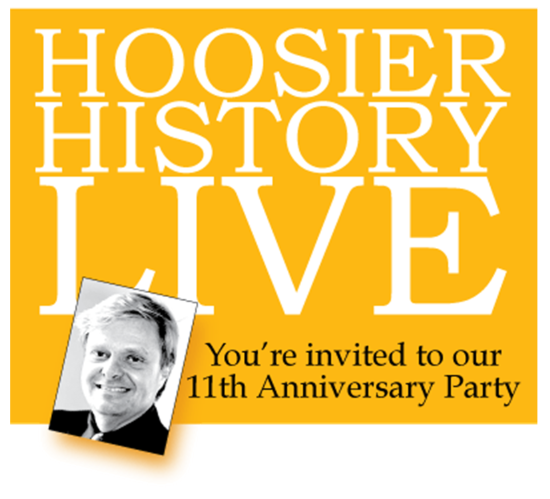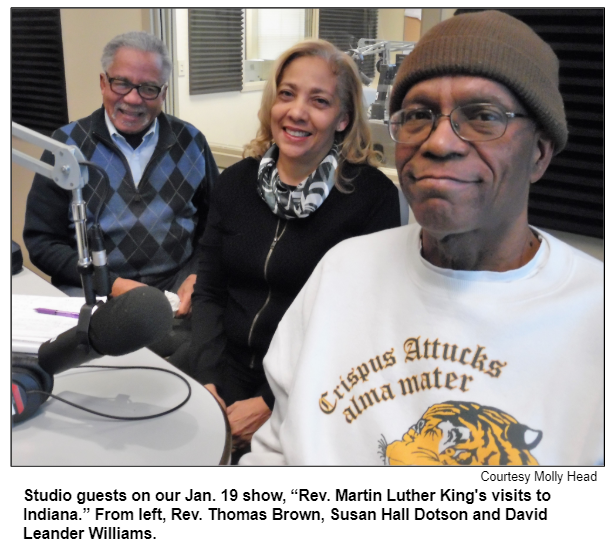
Saturdays, noon to 1 p.m. ET on WICR 88.7 FM.
Or listen live from anywhere on WICR Online!
Our call-in number during the show: (317) 788-3314
January 26, 2019
Indiana's Civil War governor and his historic house
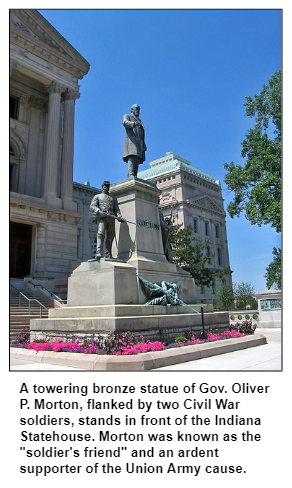
But Morton - an ally of Abraham Lincoln who came close to being the Republican nominee for U.S. president in 1876 - was a controversial figure. Critics have contended that Morton (1823-1877) was practically a dictator who abused his powers as governor during the Civil War.
To explore the impact and colorful life of Morton, who served as a U.S. senator representing Indiana following his stint as governor, Nelson will be joined by two distinguished guests:
- James Fuller, a history professor at the University of Indianapolis and the author of a new book, Oliver P. Morton and the Politics of the Civil War and Reconstruction (Kent State University Press), the first full-length biography of Morton to be published in more than 100 years.
- And Ron Morris, a history professor at Ball State University who is restoring Morton's home on the Old National Road (now U.S. 40) in Centerville, Ind. In 2012, Ron purchased the two-story house, which was built in 1848 and had been deteriorating badly.
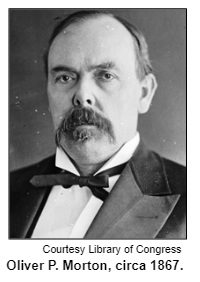
"His critics blasted him as a ruthless tyrant," Jim Fuller writes, noting that Morton was accused of exaggerating the threat of Copperheads and other Southern-sympathizing groups in Indiana as a means of rallying support for his expanded powers. He was also accused of misusing public funds and initiating "treason trials" in Indianapolis against his opponents.
Before the Civil War, Morton had been an attorney, practicing law in the house that Ron Morris is restoring. Morton was one of the early organizers of the Republican Party in Indiana and, before that, had helped form its predecessor, the People's Party.
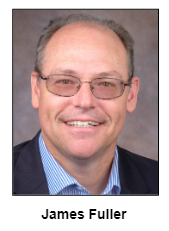
Thanks largely to Morton's dedication to the Northern cause during the Civil War, Indiana ranked second in the percentage of men of military age serving in the Union Army.

Elected to the U.S. Senate in 1867, Morton championed the rights of African Americans newly freed from slavery in the South and called for a Constitutional amendment to abolish the Electoral College. After suffering a second stroke, he died in Indianapolis in 1877 and is buried in Crown Hill Cemetery, "next to the Union soldiers for whom he had done so much," Jim Fuller notes.
Morton and his wife, Lucinda Burbank Morton, sold the house in Centerville in 1863. Our guest Ron Morris has been restoring the stately house - the only one of Morton's residences that still stands - to what it would have looked like during the 1849-1862 period.
History Mystery
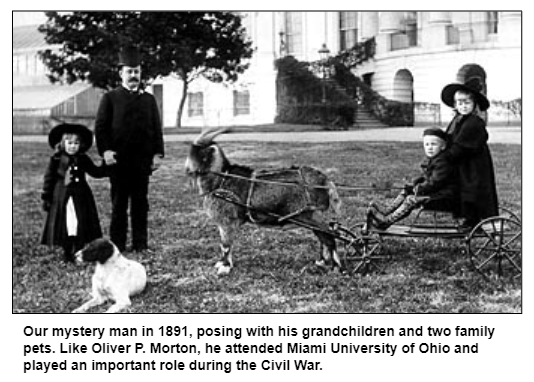
Oliver P. Morton, Indiana's governor during the Civil War, studied at Miami University in Oxford, Ohio, as a young man during the 1840s. He left after two years to become an apprentice to a lawyer.
Miami University in Ohio was the alma mater of another famous Hoosier political figure who, like Morton, had a connection to the Civil War.
Question: Who was the other important political figure from Indiana who attended Miami University and was connected to the civil war?
Please do not call in to the show until you hear Nelson pose the question on the air, and please do not try to win if you have won any other prize on WICR during the last two months. You must be willing to give your first name to our engineer, you must answer the question correctly on the air and you must be willing to give your mailing address to our engineer so we can mail the prize pack to you. The prize is a gift certificate to Story Inn in Brown County, courtesy of Story Inn, as well as four tickets to the Indiana History Center, courtesy of the Indiana Historical Society.
Join us February 28 for our anniversary soiree!
Can you believe it? Hoosier History Live has been on the air 11 years.
To celebrate, we are throwing another of our famous anniversary parties!
- When: Thursday, Feb. 28, 2019, from 5 to 7:30 p.m.
- Where: Indiana Landmarks Center, 1201 Central Ave., Indianapolis, IN 46202.
Legendary Hoosier Bobby Plump, who made the final, winning shot for the small Milan High School basketball team in 1954, will speak.
Also:
- Play live History Mystery with host Nelson Price.
- Enjoy historical re-enactors, live musical performances, and good cheer.
You are welcome to wear historic garb, or dress to represent your very proud ethnic heritage.
Thanks to our sponsors:
Delicious catered cuisine and cash bar will be provided by Black Plate Catering. Let's celebrate together! Click on this RSVP link today to let us know you're coming. It helps us out a lot if you use the form to let us know you'll be there!
Exploring Rev. Martin Luther King's visits to Indiana
Nelson Price, host and historian
Molly Head, producer/project manager, (317) 927-9101
Michael Armbruster, associate producer
Cheryl Lamb, administrative manager
Richard Sullivan, senior tech consultant
Pam Fraizer, graphic designer
Garry Chilluffo, special events consultant
Please tell our sponsors that you appreciate their support!

 Acknowledgments to Monomedia, Visit Indy, WICR-FM, Fraizer Designs, Heritage Photo & Research Services, Henri Pensis, Aaron Duvall, Chloe Tyson, and many other individuals and organizations. We are independently produced and are self-supporting through organizational sponsorship and through individual contribution at the yellow button on our newsletter or website. For organizational sponsorship, which includes logos, links, and voiced credits in the show, contact Molly Head at (317) 927-9101 or email her at molly@hoosierhistorylive.org. Our media reach continues to grow via podcasting and iTunes.
Acknowledgments to Monomedia, Visit Indy, WICR-FM, Fraizer Designs, Heritage Photo & Research Services, Henri Pensis, Aaron Duvall, Chloe Tyson, and many other individuals and organizations. We are independently produced and are self-supporting through organizational sponsorship and through individual contribution at the yellow button on our newsletter or website. For organizational sponsorship, which includes logos, links, and voiced credits in the show, contact Molly Head at (317) 927-9101 or email her at molly@hoosierhistorylive.org. Our media reach continues to grow via podcasting and iTunes.
Thank you!
We'd like to thank the following recent, new and renewal contributors whose donations help make this show possible!
- Bill McNiece
- Tom Spalding
- Joseph Leak
- Melissa Martin
- Diane Dallis
- Yetta Wolen
- Serita Borgeas
February 2, 2019 - coming up
French Lick, West Baden and The Wright Brothers
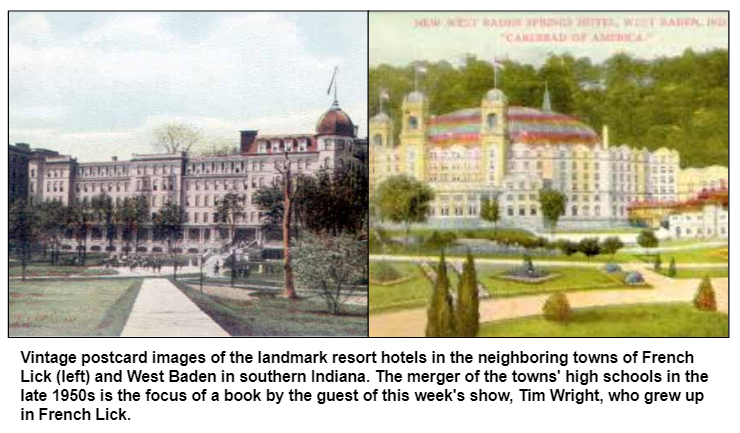

Among the residents who witnessed the merger and the creation of what became Springs Valley High School - with a basketball team known as the Black Hawks - was a first-grade student in French Lick named Tim Wright. He grew up to become a public figure, known as the banjo- and guitar-playing sibling in The Wright Brothers Band, the Indiana-based group that has performed pop, country, rock and bluegrass music at the Grand Ole Opry, on national TV shows and even on the soundtrack of a Hollywood movie.

He will be Nelson's studio guest to discuss the merger that once was the talk of the state. The high schools' mascots had been the Red Devils (a nod to Pluto) for French Lick, and across the railroad tracks that separated the two town, the Sprudels (depicted as a wood gnome) for West Baden.
Tim also will share insights about the evolution of the Wright Brothers Band, who cut their first album in the early 1970s. Tim and his brother Tom, a vocalist, have been the core of the band, which has performed with headliners including Dolly Parton, Willie Nelson and Johnny Cash. The band also has performed the national anthem at Indianapolis Colts and Indianapolis Indians games.
During the 1950s, Tim and Tom Wright's grandfather ran a barber shop in French Lick that was a hub for chatter about the consolidation of the high schools, the blending of the basketball teams and the economic challenges of Springs Valley.

In addition, the West Baden Springs Hotel - with a spectacular atrium touted as the "Eighth Wonder of the World" - had closed during the Great Depression. The landmark had various other owners over the years (including Jesuit priests and a culinary school), and did not reopen as a hotel until a spectacular restoration in 2007.
According to Tim's research, the combined population of the two towns was about 3,500 in 1958. Although wealthy visitors continued to patronize the French Lick Springs Hotel, which remained open, many assumed its glory era had passed.
Some history facts:
- In the early 1950s, the West Baden Sprudels had been coached by Marvin Wood, who later became the basketball coach of another tiny school, Milan High School. In 1954, Wood was the coach for the legendary Milan team with Bobby Plump that won the state tournament.
- John McDowell, a long-time bass guitarist and vocalist with the Wright Brothers Band (he sometimes is called the "third brother") is the nephew of Jimmy Mack, the former TV personality in Indianapolis who was the host of "Bandstand 13," a popular teen dance show during the 1960s. In 2016, Jimmy Mack, who is now 96, was a studio guest on Hoosier History Live.
- The Wright Brothers Band can be heard on the soundtrack of Overboard (1987), a movie starring Goldie Hawn.
- Known as the Wright Brothers Overland Stage Company when the band formed in 1972, the group has performed across the country. In Indiana, their performance venues have included the restored landmarks from Tim and Tom's boyhood, the French Lick and West Baden hotels.
© 2019 Hoosier History Live. All rights reserved.
|
